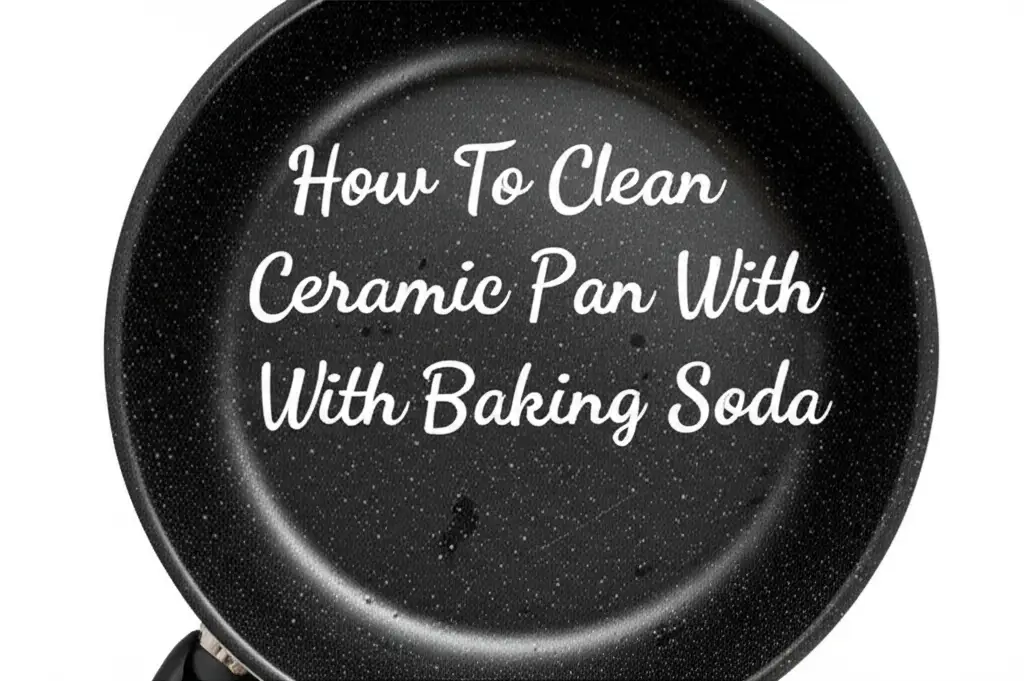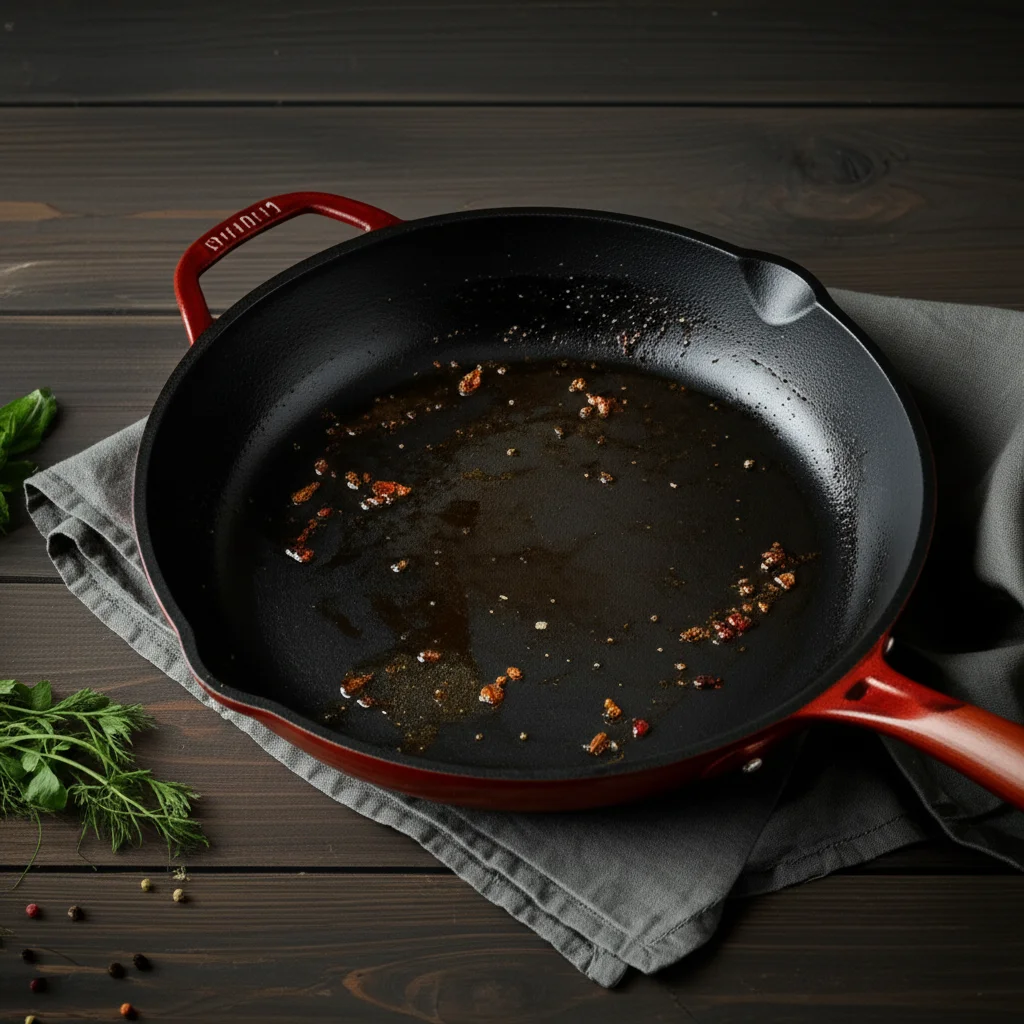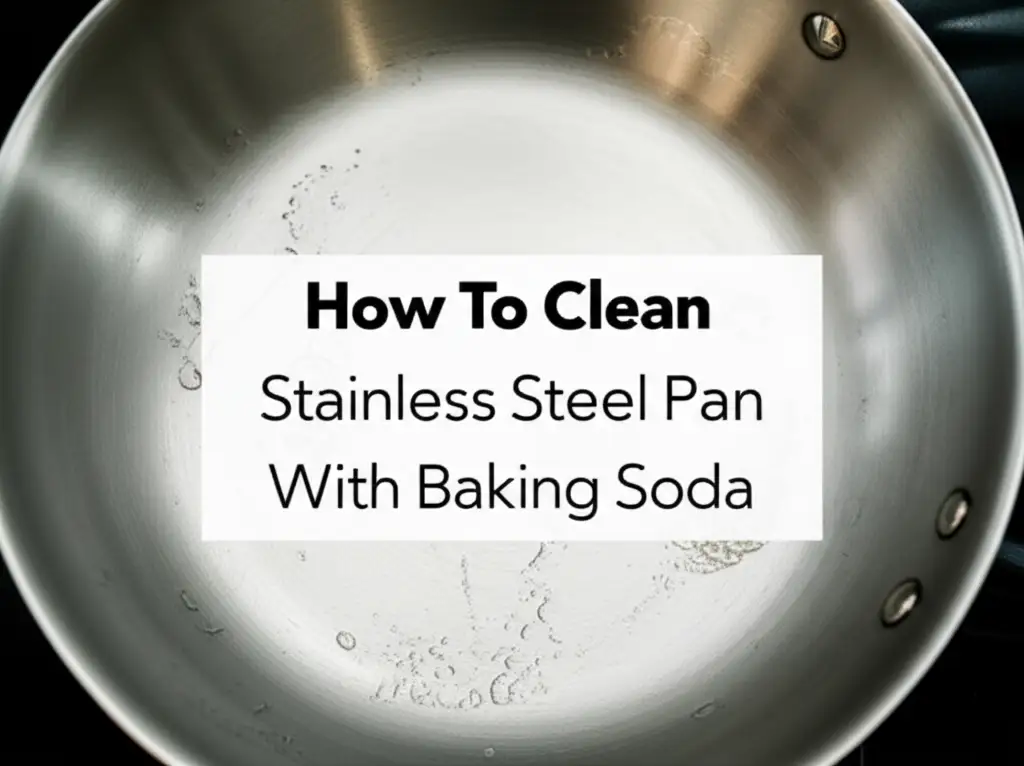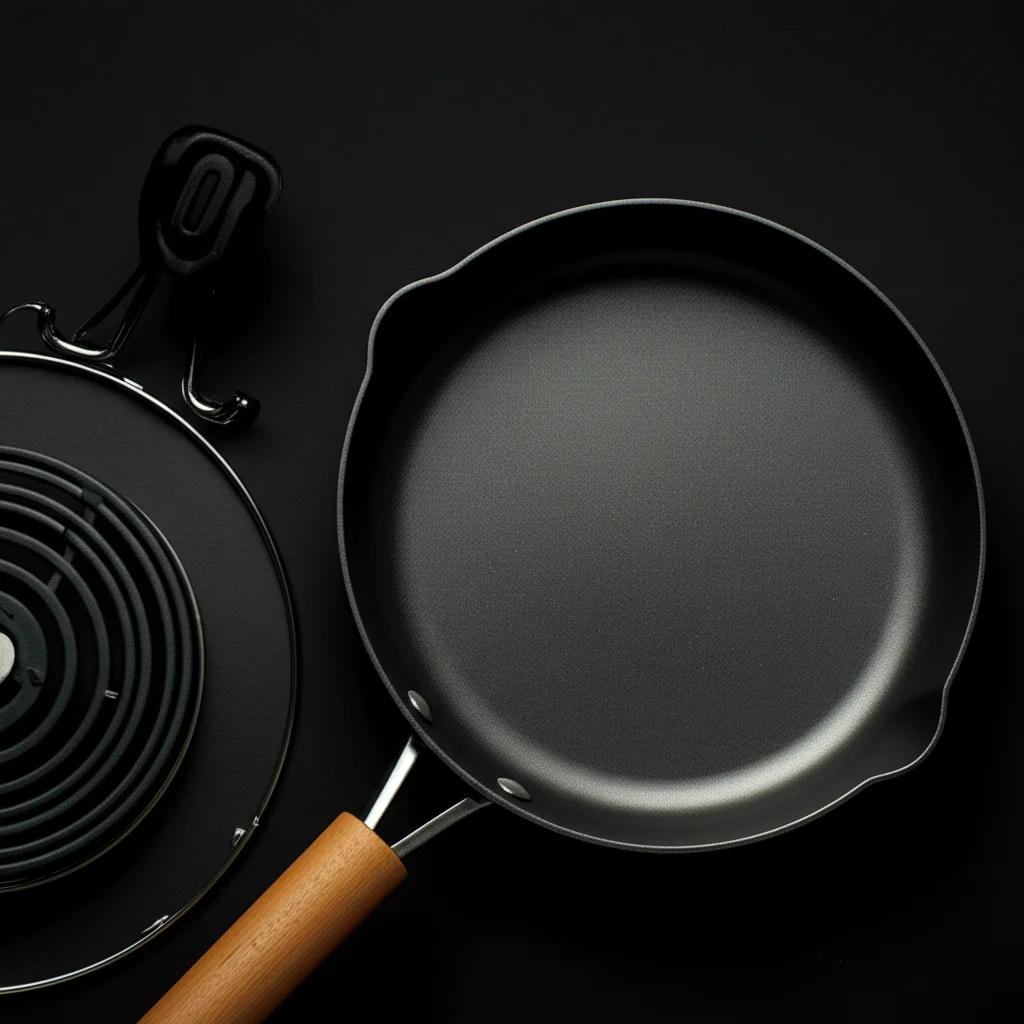· Todd Martin · Kitchen Care · 11 min read
How To Clean Ceramic Pan With Baking Soda

Clean Ceramic Pans: Baking Soda for Spotless Results
Ceramic pans are kitchen favorites. They offer excellent non-stick properties and heat distribution. However, even the best pans gather grime over time. Burnt food and discoloration can make cooking less enjoyable. You might wonder how to restore their original shine.
Harsh chemicals can damage the delicate ceramic surface. This is where a natural solution steps in. Baking soda is a gentle yet powerful cleaner. It can safely remove stubborn stains and grime. I find it works wonders on my own ceramic cookware. This article will show you exactly how to clean ceramic pan with baking soda. We will cover basic cleaning to tackling tough, burnt-on messes.
Takeaway
- Use baking soda and water paste for general ceramic pan cleaning.
- Combine baking soda and vinegar for stubborn burnt food and stains.
- Always use soft materials like sponges or cloths.
- Avoid harsh chemicals, metal scrubbers, and dishwashers.
- Proper daily care extends your ceramic pan’s life.
To clean ceramic pan with baking soda, make a paste with water and apply it to stains. Let it sit, then gently scrub with a soft sponge. For tougher spots, add a little vinegar, creating a fizzing action to lift grime without harsh abrasives.
Why Baking Soda Works for Ceramic Pans
Baking soda, or sodium bicarbonate, is a household hero. It is a mild abrasive. This means it can scrub away dirt without scratching delicate surfaces. Ceramic pan surfaces are often non-stick and scratch-prone. Baking soda offers a safe cleaning option for them.
The chemical structure of baking soda helps neutralize odors. This is great for pans that absorb food smells. It can absorb grease and oil effectively. This makes cleaning oily residue much simpler. Baking soda is also non-toxic. This gives peace of mind when cleaning cooking surfaces. It is a natural choice for your kitchen. You can learn more about its general cleaning power at how to clean with baking soda.
Essential Supplies for Ceramic Pan Cleaning
Gathering the right tools makes cleaning easy. You only need a few common household items. These supplies ensure safe and effective cleaning. Using the correct tools protects your ceramic pan’s surface. This helps maintain its non-stick properties for longer.
- Baking Soda: The main cleaning agent.
- Warm Water: For making a paste and rinsing.
- Soft Sponge or Microfiber Cloth: For gentle scrubbing. Do not use abrasive scrubbers.
- Plastic or Silicone Scraper: Helpful for dislodging loose, stuck-on food.
- White Vinegar (optional): For tackling tougher, burnt-on stains.
- Dish Soap (mild, optional): For initial clean-up of loose food.
- Soft Towel: For drying your pan completely.
These items are gentle on ceramic surfaces. They help lift grime without causing damage. Always ensure your tools are clean before you start.
Step-by-Step Guide: Basic Baking Soda Clean
Cleaning your ceramic pan with baking soda is simple. This method works well for everyday spills and light discoloration. I use it regularly to keep my pans looking new. It helps maintain the pan’s non-stick quality. This basic clean is gentle and effective.
Preparing Your Pan
First, let your ceramic pan cool completely. Never clean a hot pan. Pour out any excess oil or loose food particles. You can use a soft plastic scraper to remove any large, stuck-on bits. A little warm water and mild dish soap can help rinse away loose residue. Dry the pan slightly before applying baking soda.
Making the Paste
Pour a generous amount of baking soda into the pan. Start with a few tablespoons. Slowly add warm water, a little at a time. Mix it until you form a thick paste. The paste should be like toothpaste. It should stick to the pan’s surface without running off. This consistency is important for effective cleaning.
Applying and Scrubbing
Spread the baking soda paste evenly over the dirty areas. Focus on stains, burnt spots, and discolored areas. Let the paste sit for 15-30 minutes. For tougher stains, you can let it sit for a few hours. After soaking, gently scrub the paste with a soft sponge or microfiber cloth. Use circular motions. You will see the grime start to lift. Remember, gentle pressure is key to protect the ceramic surface.
Rinsing and Drying
Rinse your pan thoroughly under warm running water. Make sure to remove all baking soda residue. Inspect the pan for any remaining stains. If needed, repeat the process. Once clean, dry the pan immediately with a soft towel. Letting it air dry can lead to water spots. Properly drying prevents rust on any metal parts. The process is similar to how you might clean a frying pan with baking soda.
Tackling Tough Stains: Baking Soda and Vinegar Method
Sometimes, your ceramic pan faces really tough stains. Burnt-on food or dark discoloration needs extra power. This is where baking soda and vinegar shine. The combination creates a fizzing action. This reaction helps lift stubborn grime. I have used this method on my most challenging pan messes. It often works when a simple baking soda paste does not.
How the Reaction Works
When baking soda (a base) mixes with vinegar (an acid), they react. This reaction creates carbon dioxide gas. The gas forms bubbles. These bubbles help loosen and lift burnt food and grime from the pan’s surface. It is a powerful yet natural cleaning process. This method avoids harsh chemicals. It is safe for ceramic pans when used correctly. Learn more about this powerful duo for cleaning various items at how to clean with vinegar and baking soda.
Step-by-Step for Tough Stains
- Remove Loose Debris: First, scrape off any loose food particles. Use a plastic or silicone scraper.
- Apply Baking Soda: Sprinkle a generous layer of baking soda directly onto the stained area. Make sure the entire affected area is covered.
- Add Vinegar: Slowly pour white vinegar over the baking soda. You will see it fizz immediately. This fizzing action is normal and helps lift the grime.
- Let it Sit: Allow the mixture to sit for at least 30 minutes. For very stubborn stains, let it sit for a few hours or even overnight. The longer it sits, the more time the reaction has to work.
- Gentle Scrubbing: After soaking, gently scrub the area with a soft sponge or microfiber cloth. The residue should come off more easily now. Apply light pressure.
- Rinse and Dry: Rinse the pan thoroughly with warm water. Ensure all residue is gone. Dry it completely with a soft towel. This prevents water spots. This technique is also effective for non-stick pans.
Restoring Shine and Non-Stick Properties
After a deep clean, your ceramic pan might look brighter. However, maintaining its non-stick properties is key. A clean pan also looks better on your stovetop. Proper care helps extend its life. This section covers steps to keep your pan performing its best.
Re-seasoning Your Ceramic Pan (If Needed)
Some ceramic pans can benefit from re-seasoning, especially after deep cleaning. This process helps restore the non-stick surface. Always check your pan’s manufacturer guidelines first.
- Clean and Dry: Ensure the pan is perfectly clean and dry.
- Apply Oil: Put a small amount of cooking oil (like vegetable or grapeseed oil) on a paper towel. Rub a thin layer of oil over the entire cooking surface.
- Heat Gently: Place the pan on low heat for a few minutes. Let the oil warm up.
- Wipe Excess: Remove the pan from heat. Carefully wipe away any excess oil with a clean paper towel. The goal is a very thin, almost invisible layer of oil. This can help maintain a smoother cooking surface.
Gentle Cleaning Practices for Longevity
Consistent gentle cleaning prevents tough stains. Always wash your pan after each use. Let it cool down first. Then, use warm water and a soft sponge. A small amount of mild dish soap is fine. Avoid letting food dry and stick to the surface. This proactive approach saves time and effort later. It also helps preserve the pan’s non-stick coating.
Maintaining the Surface
Avoid stacking pans without protection. Use pan protectors or paper towels between them. This prevents scratches. Do not use metal utensils on your ceramic pan. Stick to wood, silicone, or plastic tools. These materials are much kinder to the delicate surface.
Common Mistakes to Avoid When Cleaning Ceramic Pans
Cleaning ceramic pans incorrectly can damage them. This reduces their non-stick performance and lifespan. I have learned these lessons over time. Avoiding these common mistakes keeps your cookware in top shape. Proper care helps you enjoy your pans for many years.
- Using Harsh Abrasives: Metal scouring pads, steel wool, or abrasive cleansers scratch the ceramic coating. These scratches destroy the non-stick properties. Always use soft sponges, cloths, or silicone scrubbers.
- Dishwasher Use: Many ceramic pans are not dishwasher safe. The harsh detergents and high heat in dishwashers can degrade the non-stick coating. Hand washing is almost always better for ceramic pans. Check manufacturer instructions always.
- Extreme Temperature Changes: Never plunge a hot pan into cold water. This can cause thermal shock. Thermal shock leads to warping or cracking of the pan. Let your pan cool completely before washing it.
- Using Metal Utensils: Metal spatulas, spoons, or whisks can scratch the ceramic surface. Stick to silicone, wood, or plastic utensils. This preserves the non-stick coating.
- Overheating Empty Pans: Heating an empty ceramic pan to very high temperatures can damage the coating. Always add oil or food before heating. Ceramic pans conduct heat efficiently, so medium heat is often enough.
- Abrasive Cleaners: Avoid oven cleaner, bleach, or other strong chemical cleaners. They can ruin the ceramic finish. Baking soda is a gentle and effective alternative.
Everyday Care Tips for Ceramic Cookware Longevity
Proper daily care is the best way to keep your ceramic pans performing well. Simple habits can greatly extend the life of your non-stick cookware. I follow these tips to ensure my pans stay effective and beautiful. Consistent care saves you time on deep cleaning later.
- Wash Immediately After Use: Once your pan cools, wash it. Do not let food sit and dry onto the surface. Dried food becomes much harder to remove. This prevents stubborn stains from forming.
- Use Low-to-Medium Heat: Ceramic pans retain and distribute heat very well. You rarely need high heat. Cooking on lower settings helps prevent food from sticking and burning. It also protects the non-stick coating from excessive wear.
- Cook with Oil or Butter: Always use a small amount of cooking oil, butter, or cooking spray. This helps prevent sticking. It also protects the pan’s surface during cooking. Even non-stick pans benefit from a little fat.
- Store Properly: Protect your ceramic pans from scratches in storage. Use pan protectors, felt pads, or paper towels between stacked pans. Hanging them is also a great option if you have the space.
- Avoid Aerosol Cooking Sprays: Some aerosol sprays contain propellants. These can build up a sticky residue on the pan. This residue is hard to remove and can make the pan lose its non-stick properties. Instead, use a pump spray bottle with your own cooking oil.
- Gentle Cleaning Tools: Always use soft sponges, cloths, or silicone scrubbers. Never use abrasive materials like steel wool or harsh brushes. These will scratch and damage the ceramic coating.
FAQ Section
Is baking soda safe for ceramic pans?
Yes, baking soda is safe for ceramic pans. It is a mild abrasive that cleans effectively without scratching the delicate non-stick surface. Always mix it with water to form a paste and use a soft sponge for application. This ensures gentle yet thorough cleaning.
Can I use vinegar with baking soda on my ceramic pan?
You can use vinegar with baking soda on ceramic pans. This combination creates a fizzing action that helps lift stubborn, burnt-on food and tough stains. Apply baking soda, then pour vinegar over it, let it sit, and gently scrub.
How do I remove burnt food from a ceramic pan with baking soda?
To remove burnt food, sprinkle a thick layer of baking soda over the burnt area. Add a little water to make a paste. Let it sit for several hours or overnight. Then, gently scrub with a soft sponge or plastic scraper until the burnt food lifts away.
What should I avoid when cleaning ceramic pans?
Avoid metal utensils, abrasive scrubbers like steel wool, and harsh chemical cleaners. Do not clean a hot pan by plunging it into cold water. Also, hand wash your pan; avoid dishwashers as they can damage the non-stick coating over time.
How often should I clean my ceramic pan with baking soda?
You can use the baking soda method as needed, especially for visible stains or sticky residue. For general cleaning, gentle hand washing after each use is usually sufficient. A deeper clean with baking soda is good for periodic maintenance or stubborn messes.
Will baking soda remove all types of stains from ceramic pans?
Baking soda is highly effective for most food stains, burnt-on residue, and discoloration. For extremely deep or chemical stains, its effectiveness may vary. However, it is a powerful and safe first step for almost any pan cleaning challenge.
Conclusion
Cleaning your ceramic pan with baking soda offers a safe, effective, and natural solution. You can easily tackle everything from everyday grime to stubborn burnt-on food. I find this method works wonders. It protects your pan’s delicate non-stick surface. This allows you to enjoy perfect cooking for longer.
Remember to always use gentle tools. Let the baking soda do its work. Avoid harsh chemicals and abrasive scrubbers. By incorporating these cleaning tips into your routine, your ceramic pans will stay in excellent condition. Embrace the power of baking soda. Keep your ceramic cookware looking new and performing its best. Try these methods today for a cleaner kitchen.





